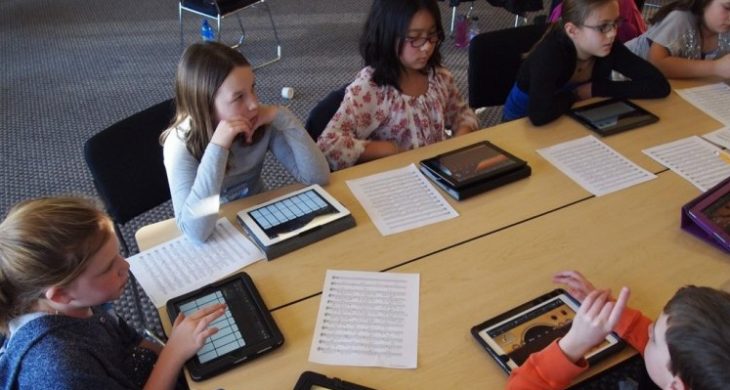Teachers are always looking for new techniques that can more fully engage their students’ attention and mental capabilities. While many concepts are tested and abandoned, one technique, known as Whole Brain Teaching (WBT), is gaining popularity, and some teachers are campaigning to have it more widely implemented in classrooms nationwide.
First developed in 1999, Whole Brain Teaching promotes a high-energy, hyper-focused method where teachers use game-like challenges, key words, and motivational methods, while eliciting continuous spoken responses from their students to keep them fully engaged every minute.
According to educator, Nakia Nicholson, principal of the education-based non-profit The Children’s Guild, the value of Whole Brain Teaching is that it continually engages students’ brains and keeps them attentive. This way, students “don’t have any downtime to be disruptive or engage in activity that’s not related to what they’re supposed to be learning,” Nicholson says.
Whole Brain Teaching: How It Works
Designed for students of all ages, from kindergarten through college, Whole Brain Teaching maximizes student engagement by focusing on mimicry, which is a natural way for the brain to learn. This is coupled with an intense, in-the-moment teaching method that compels constant attention from students. From the beginning, the teacher introduces the basic rules to the class, a little bit at a time, and students are trained to listen and respond within the framework of those rules.
For example, when the teacher says “Class,” students must instantly respond “Yes!” In many instances, students must also repeat words exactly as the teacher says them (for example, if the teacher says “Class, Class!” then students must respond “Yes, Yes!”). In another core element, teachers use a scoreboard game with rewards, motivating students to pay attention so that they can win points. All of the elements used in Whole Brain Teaching are designed to mitigate inattentiveness and curb disciplinary disruptions, as students are required to respond out loud to everything the teacher is doing and saying. The intention is to keep them attentive and engaged—and to do so in a highly entertaining way.
Does Whole Brain Teaching Get Results?
According to one California elementary school, math and language test scores increased by 11 percent after WBT was implemented in classrooms. On the other hand, Whole Brain Teaching also has its share of critics, including those who fear that this is a type of educational “conditioning” that at worst suppresses individualism, and at best won’t work for some students—especially those who are shy or introverted, or who are more gifted.
The teaching method has become increasingly popular however. Today, Whole Brain Teaching is now being utilized in many countries, and attracts a following among parents and educators.
Is Whole Brain Teaching Right for Your Child?
Parents will know best whether Whole Brain Teaching might be effective for their children. For students who are easily bored and have trouble being motivated, this energetic, entertaining approach might provide the motivation they need. But if your child prefers to quietly listen in class, this program may not be helpful.
If you think your child might benefit from a teaching method that differs from the one they are currently receiving, visit K12.com to read about the personalized learning students receive at K12-powered virtual schools. Online learning may be a great option for your student!
,










